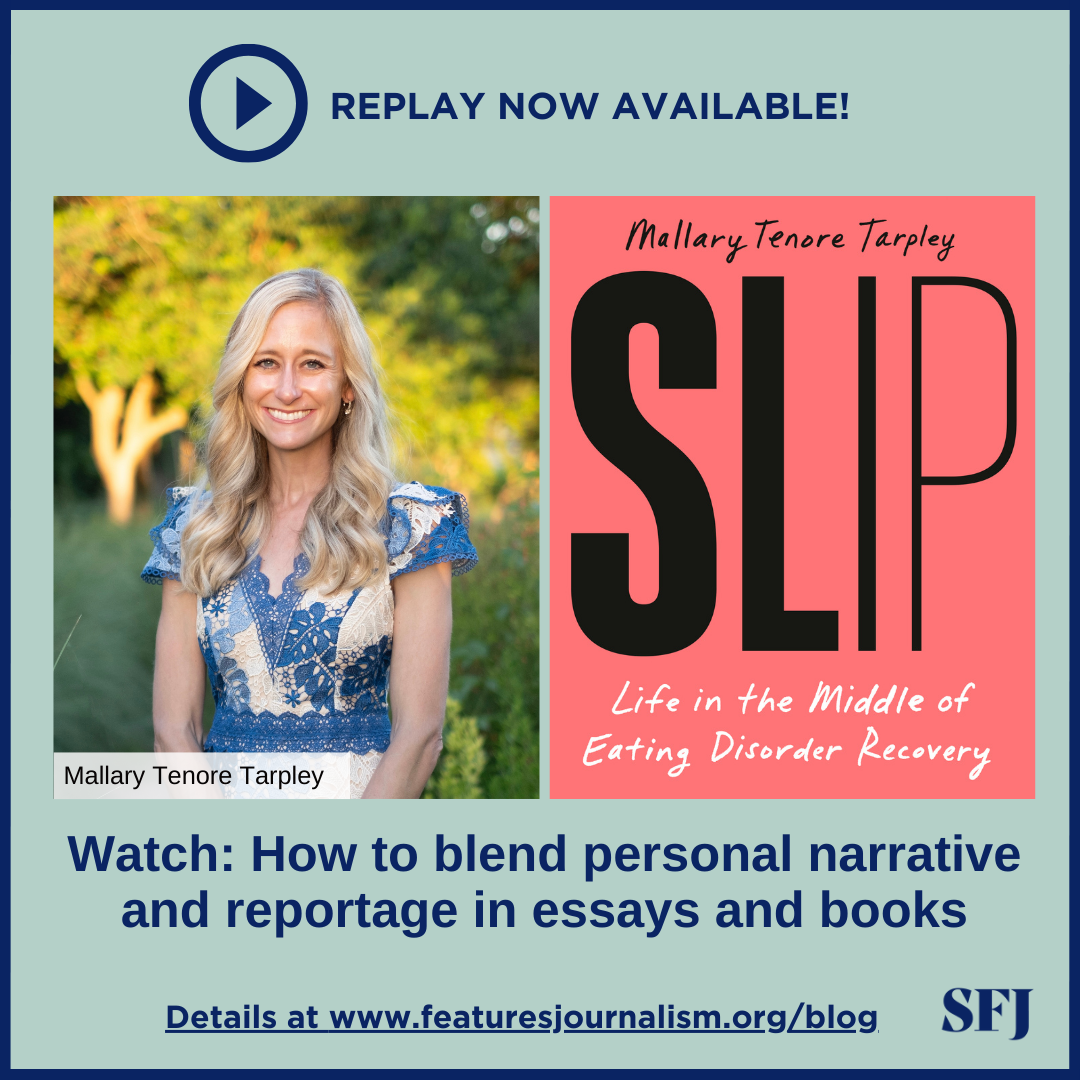Watch replay: Mallary Tenore Tarpley shows journalists how to weave personal narrative with strong reporting
Many journalists feel uncomfortable inserting themselves into their stories or — gasp — writing at length about their own lived experiences.
Sometimes, though, the best way to help readers understand and care about an issue is to write about it in a deeply personal way.
For the past 15 years, journalist Mallary Tenore Tarpley has been writing personal essays for major publications about her recovery from anorexia nervosa, which she developed at age 12 after her mother died of breast cancer. Her debut nonfiction book, “Slip: Life in the Middle of Eating Disorder Recovery,” comes out on Aug. 5. On July 15, Tarpley led an SFJ webinar about how to blend personal narrative and reportage in essays and books.
You can watch a recording of the webinar here. Use this passcode to access the recording: +YfAn1.j
“We all have personal stories that we want to share, but it may be that we’re not quite ready to share them,” Tarpley explained during the SFJ webinar. “I know there have been moments where I’ve written personal essays and I thought, huh, that didn’t feel as authentic as I wanted it to because I was holding back on something — and that was typically an indicator that I wasn’t yet ready to delve deeply into the hard truths of that narrative. And that’s OK!”
Tarpley shared skills and techniques to help journalists when they do feel ready to move forward with their writing projects, including:
How to think about — and deftly use — the words “I, we, you” when writing personal pieces.
How to discern what makes your experience yours but not yours alone.
How to employ the 75/25 rule: “Roughly 75% of the essay should be about you,” Tarpley shared. “The rest should be from other sources that advance your narrative.”
How to weave quotes and insights from expert sources into a personal story in a seamless, natural way.
How to break into the world of “memoir plus” — a nonfiction book genre that plays to journalists’ strengths.
Huge thanks to Mallary Tenore Tarpley for sharing so many helpful tips and insights with SFJ members! Here’s a bit more information about our speaker so that SFJ members can stay connected with her:
Tarpley’s first book, “Slip: Life in the Middle of Eating Disorder Recovery,” is equal parts memoir and journalism. It explores the under-discussed complexities of eating disorders and recovery from them. The book weaves together Tarpley’s own narrative with perspectives from clinicians, researchers and others with lived experience.
Tarpley started her career at The Poynter Institute. As managing editor of Poynter.org, she wrote and edited stories about the media industry and also taught social media and writing workshops for professional journalists.
Tarpley’s articles and personal essays have been published in The New York Times, The Washington Post, the Los Angeles Times, The Dallas Morning News, the Tampa Bay Times, Teen Vogue and Harvard University’s Nieman Storyboard, among other publications. She maintains a weekly Substack newsletter, Write at the Edge, featuring writing tips and best practices. Learn more about Tarpley here.
Laura T. Coffey is president of the Society for Features Journalism and a longtime editor and feature writer. She’s also the author of the bestselling nonfiction book “My Old Dog: Rescued Pets with Remarkable Second Acts.” Connect with Laura here.

